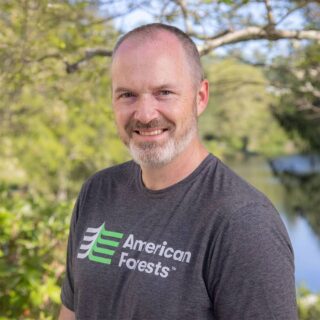The Reforestation Pipeline Challenge
Native thornforest seedlings are the cornerstone of our reforestation work in the Rio Grande Valley. However, local nurseries currently can’t produce enough seedlings to meet the area’s huge reforestation need. There are a variety of reasons for this clog in the reforestation pipeline, ranging from a lack of infrastructure to shortages of suitable seed. American Forests is helping to tackle this problem by conducting research, creating business plans and funding seed collection efforts.
The Need for Seeds and Seedlings
According to American Forests’ first-of-its-kind research, the Rio Grande Valley has 67,000 acres that are a high priority for reforestation. Reforesting this entire area would take 67 million seedlings, with 18 million alone needed for public lands. At their current rate of production, the area’s nurseries would take 140 years to produce enough seedlings to meet this need. Major barriers to scaling up nursery output are a lack of investment, labor shortfalls and shortages of appropriate native plant seeds.
Seed Collection Is Tricky Business
In the Rio Grande Valley, U.S. Fish and Wildlife Service nurseries and their network of contract growers often struggle to obtain appropriate native plant seeds. These seeds must be collected from a variety of locations and parent plants to ensure genetic diversity, which increases a forest’s ability to adapt to climate change.
Collecting seed from the wild is, however, complicated work. It’s physically demanding, with collectors exposed to extreme heat and harsh sun. And now, as climate change triggers extreme droughts, freezes and floods, thornforest plants are fruiting at unpredictable times, or in some years not at all.
How American Forests Is Boosting Seed Supplies
American Forests is partnering with the Fish and Wildlife Service to boost collection of climate-resilient native seeds. American Forests staff searches for specific plants, tracks the plants as they flower and returns when the plants have set seed. The goal is not only to reach minimum yearly seed collection goals for each species, but to ensure that the seeds are from genetically diverse and climate-adapted parent plants.




